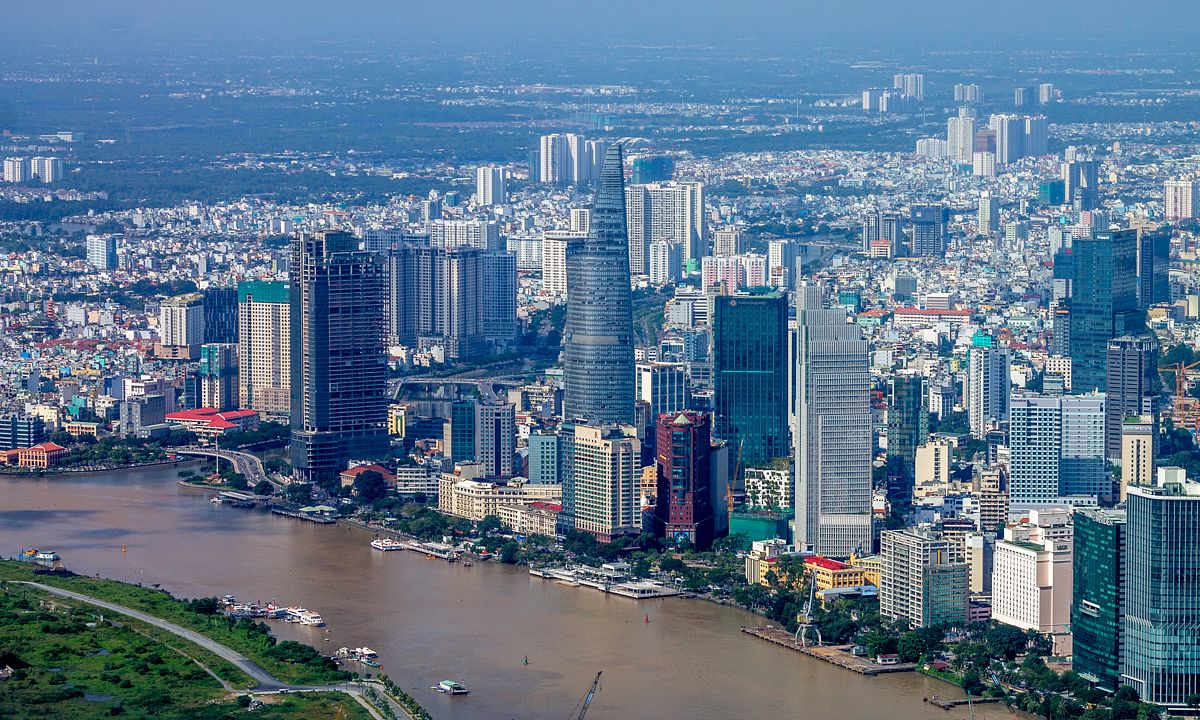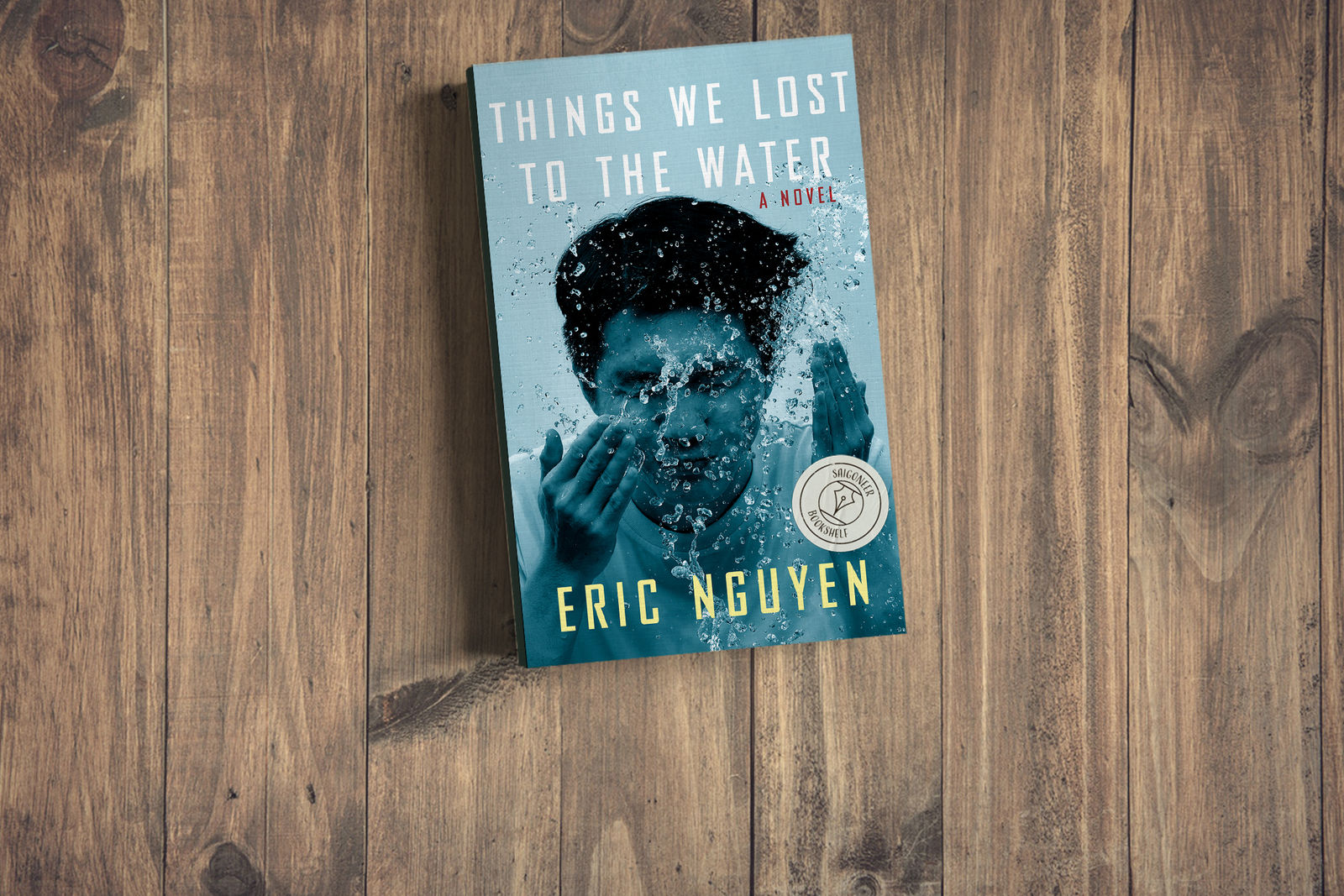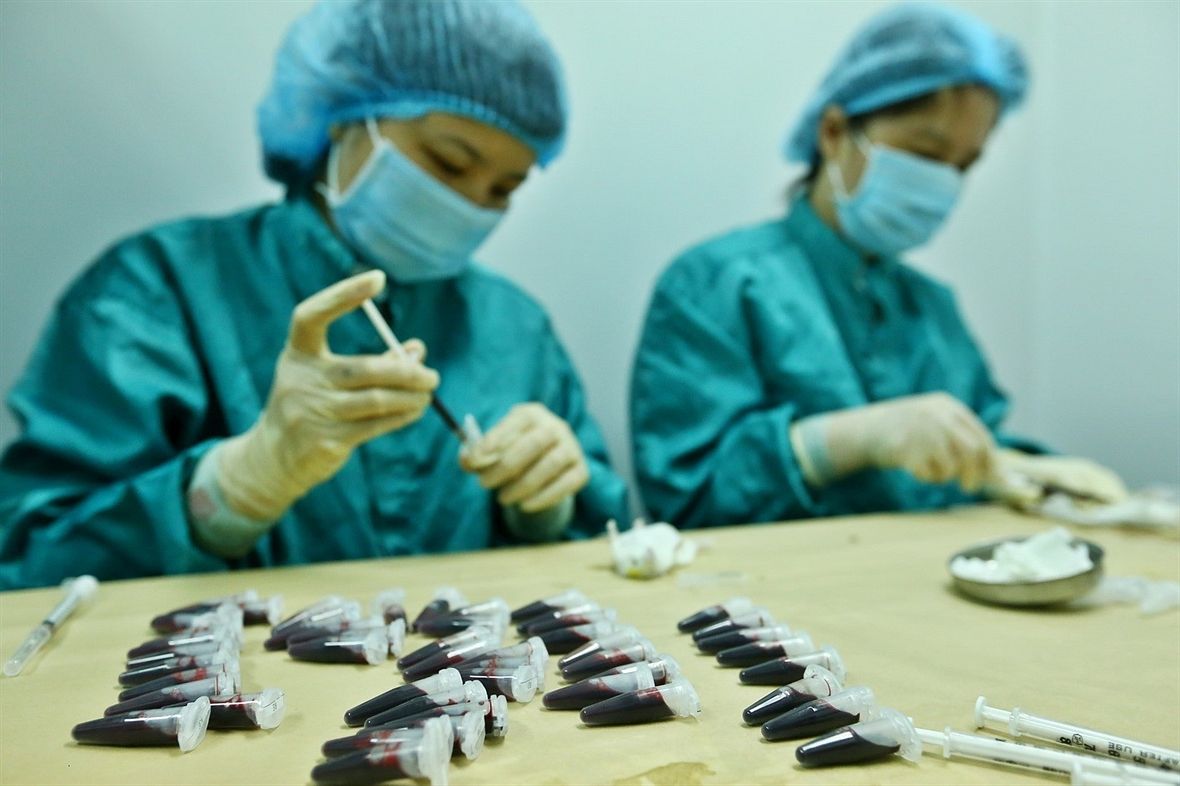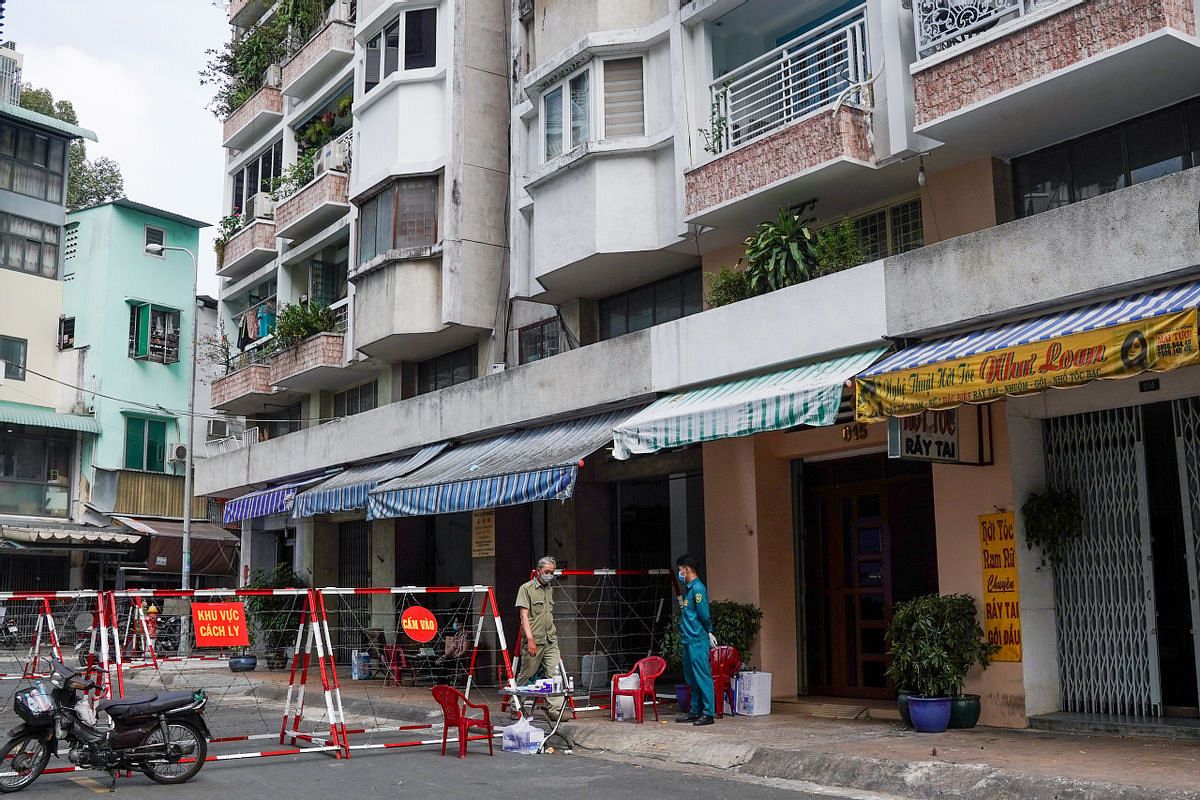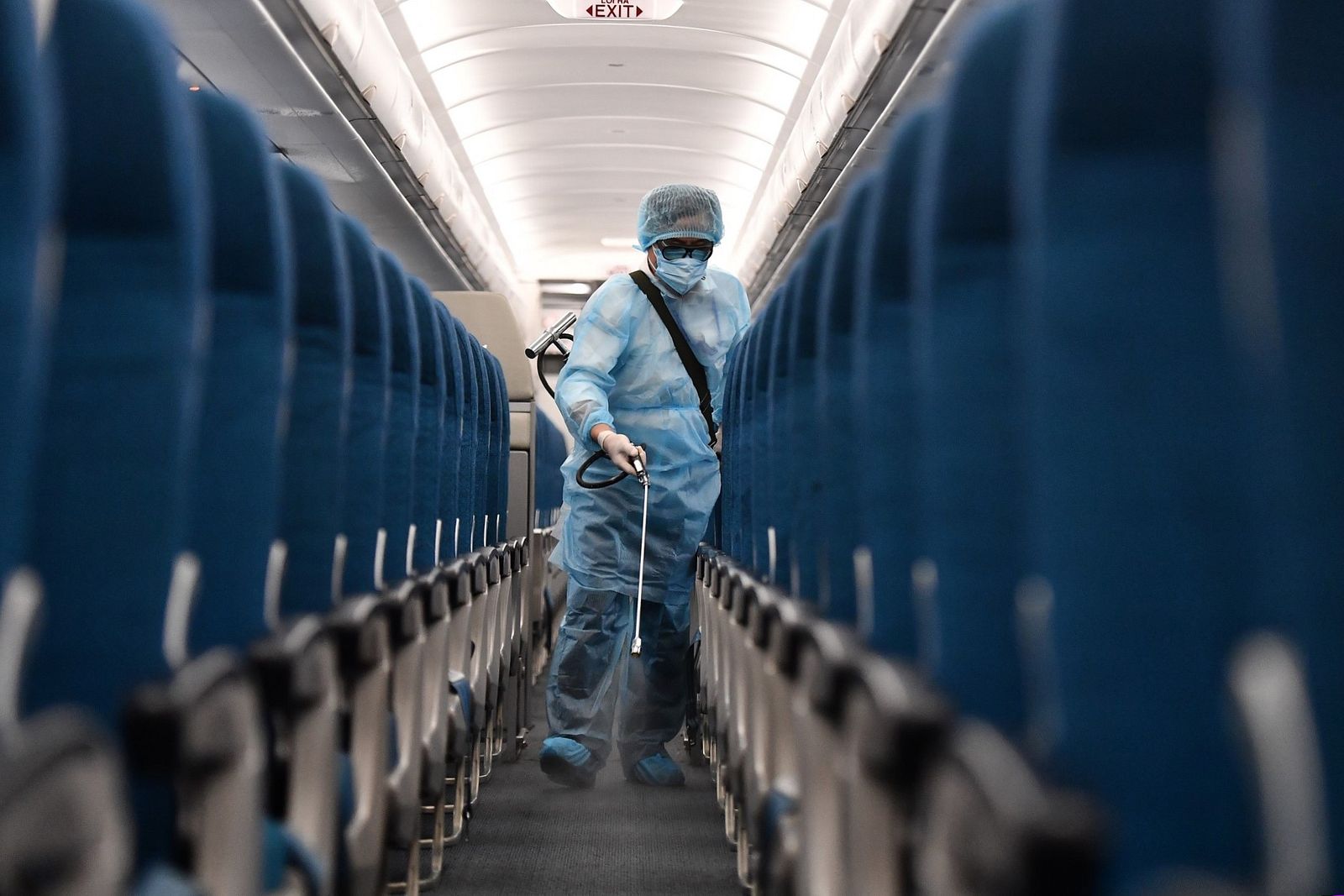In Con Đã Về Nhà - I'm Home, Tăng Quang documents his two-week stint in quarantine at Military School Zone 7 in District 12 of Saigon with a combination of paintings and prose.
In a time when the coronavirus is seeing a resurgence in Vietnam, it is reassuring to look back at the diligent response to an earlier wave of the pandemic via a surprisingly heartwarming experience in isolation.
Tăng Quang, a designer and architect, returned to Vietnam from his studies at the University of the Arts London during the early days of the pandemic. While in quarantine, Quang took to sketching and painting scenes of life inside the facility. He shared these paintings on Facebook and went to bed; he awoke to surprising internet virality. From then on, his peaceful time was interrupted by interview inquiries and a request from the Vietnam Women's Publishing House to turn his paintings into the book that is now available, Con Đã Về Nhà - I'm Home.
The book gives a general picture of what it was like to quarantine at Military Zone 7 with entertaining and moving vignettes of life inside. But at its core, the book is a veneration of the care and hard work put in by the doctors, nurses and soldiers working at the quarantine center.

Medical staff in full PPE still manage to be cheery despite the Saigon heat.
I met Quang at a cafe along the canal in Phu Nhuan to discuss his time in quarantine and the process of making this book. After the stresses of living in a pandemic-riddled London, making the difficult decision to return home, and the anxiety of multiple flight cancellations, Quang found himself in quarantine "living without a worry."

The time in quarantine was an opportunity to rest and recharge before returning to daily life. "I am a pigeon, living without a worry."
"I just felt that, after the first day of being in this new environment, I couldn't waste my time with only sleeping and eating," he said.
Originally, Quang thought he would "just capture some landscapes," as that is a passion of his. However, he found himself drawn to human interactions: "When I observed the daily activities of people in the quarantine center I felt a lot of emotion, so I thought it would be a good idea to reflect my emotion in paintings or sketches."

A depiction of the ladies room, which was filled with snacks and drinks sent by family. "Take a shot with me and we're gonna talk about life!"
Quang had no expectations of internet fame and spent his time sketching for his own entertainment, to create gifts for the doctors and soldiers, and to amuse his roommates. "When I uploaded my paintings I had no thought about it after uploading them. I was playing cards with my roommate and I didn't care about anything," he shared. "When I woke up I was really shocked. I looked at my Facebook and it was not like normal, it was overloaded with messages."

Creating bonds and passing time in room 504.
Quang was swamped with requests from magazines and newspapers. He remembers telling a friend, "I feel a little bit regretful...I shouldn't have uploaded the album to Facebook because now I really feel that I don't have freedom."
Despite the drawbacks of being in demand, Quang is grateful for the way in which the popularity of his paintings has expanded his connections and given him new opportunities, with the benefits outweighing the negatives, "maybe 80% to 20%."
After Quang uploaded a second album of paintings on Facebook, he received an offer from the Women's Publishing House. The publisher wanted to convey the country's response to the pandemic and also create a campaign to benefit women who were seriously impacted by the virus. Although nervous due to his lack of experience, with the publisher's encouragement, Quang got on board.
The most difficult part of the book process was the deadline. The publisher wanted a quick turnover so that the book could be published before the "end" of the pandemic. With deadlines to meet, Quang put in "10 to 12 hour days for over 20 days without resting."
Quang, who is from Buon Ma Thuot, spent his time working on the book in Saigon once he left quarantine. "I didn't have enough time to return to my hometown to visit my mother because I just stayed in my room to draw, and sometimes I just felt that it was like a prison," he said with a laugh. "I just remember the time in the quarantine center was maybe the best time for me after I returned to Vietnam. After that, I had no time for myself."

A peaceful scene from an evening in quarantine.
Creating a home in Military Zone 7
There are a lot of ways one can imagine quarantine facilities, and positive feelings aren't likely what you'd associate with it. Quang believes that the goodwill created at Military Zone 7 was due to the relationships that were built on mutual respect between the quarantined and those running the center.
"In my quarantine center, it was a two-sided connection," he said. "We showed great respect to them and they could feel our emotions and positivity. Feeling this appreciation, the care workers tried to further improve our experiences."
Reflecting on the days he spent in quarantine, two things stood out to Quang as the most meaningful: the support of the soldiers, and the positive atmosphere in his room.
The soldiers' tireless and cheerful efforts made life easy at the center. "I just stayed in bed and they delivered every meal to me," Quang remembers. In sharp contrast, when he was in London, he made daily trips to supermarkets which had become really "chaotic and overcrowded" due to the pandemic. But he explains that in Vietnam, "just for breakfast, I had six options, it was so amazing. It was totally better than the food I could cook, so I enjoyed it a lot."

The food options included vegetarian, meat-sourced, low-carb, and "big-eater diets for big boys."
Reflecting on the way he was looked after in quarantine, Quang said: "except for my family, no one would serve me like that." Quang's capacity to recognize and cherish this care created the sense of a "home" in quarantine, even if it was just a temporary one.
The soldiers of Military School Zone 7
The soldiers' work wasn't easy. Each of the five floors in the quarantine camp "housed more than 100 people, but only two soldiers were assigned" to manage each floor. As there were no elevators, the soldiers routinely took the stairs multiple times a day to deliver food and carry heavy luggage and care boxes sent by families.

The "all-day users of computers" admired the military discipline of the soldiers.
The soldiers were consistently calm, careful, funny, lighthearted and cheery in all activities, even in the quick disposal of "horrendous" rubbish heaps that built up from the "all-day computer users."
Going above the above and beyond, the soldiers also gave parting gifts to each room when it was coming close to the time to say farewell. The gifts included handmade keychains of zodiac signs that were appropriate to everyone's year of birth — a horse for Quang — as well as boxes of chocolates and "a fruit basket of vitamins."
On celebratory evenings such as gift-giving ceremonies, the quarantined would cheer for the soldiers with "long-lasting hand-claps." The soldiers even had "fangirls" who, as Quang described in the book, "wildly danced and screamed with excitement behind face masks" during these bouts of appreciation for the soldiers.

A female ward gives letters of appreciation to the health workers.
Brotherhood in room 504
Quang describes and draws his roommates in room 504 in hilarious detail. Quang, a millennial, was grateful to have his mindset widened by his Generation Z companions. One such character was a young man returning from the Netherlands who was obsessed with skincare and always volunteered to be a model for photos. In one sketch, Quang illustrates him posing for a photo while pretending to mop the room.

A young man returning from the Netherlands strikes a pose while "mopping."
Other characters included the "start-up guy," a German guy who was "big as an elephant, strong as an ox and ate like a pig," and the "older brother of the room" from France who avoided contact with everyone.

The "German guy" made full use of whatever heavy things he could find in the camp to maintain his muscles.
Although there were some conflicts with the Frenchman, who wanted those in his room to follow the same level of strictness as him when it came to social distancing, they learned to accommodate one another and formed a "brotherhood." Playing Monopoly and card games were key to their bonding, although one roommate became so distraught by his constant losses that Quang drew him lying on the floor surrounded by discarded cards and with one foot stuck dejectedly in a waste basket.
Fearing a visit from Ms. Vy
Although there were a lot of positives to life in quarantine, fears of the coronavirus loomed large. Temperatures were taken twice a day in what was referred to as "the shots." One day, after getting his shot, Quang turned out to be a "hot boy." Luckily, it was found that Quang's temperature was above average because he hadn't drunk enough water and had slept too much.
There was another scare in room 504 when a roommate woke up coughing close to their departure date. Fortunately, it turned out that he just had a sore throat from sleeping without a shirt on because he didn't have any clean clothes as he'd packed only dirty laundry. This particular roommate was also the source of ire for his over-the-top fraternization around the center, which eventually culminated in his being quarantined within quarantine.
There was also the tension of awaiting COVID-19 test results. Quang recalls in the book "desperately waiting for swab test results" and the mutual prayer of "God bless me! Please don't let Ms. Vy visit me." Ms. Vy, or cô Vy in Vietnamese, is the humorous moniker Vietnamese netizens gave COVID-19.

Nervously waiting for the results of coronavirus testing in what Quang refers to as "Quarantined Next Top Model."
All this monitoring, testing, and caring for those in quarantine was done with great sacrifice from the doctors, nurses and soldiers. One doctor working at the center hadn't seen her children in weeks. Quang depicts another doctor whose wife was only able to visit with him from a distance. They are shown with a wide berth between them and both wearing masks. Further, for those working at the center, their time wasn't up when all those quarantined were released as they themselves would have to do an additional two weeks of quarantine in case they had been exposed to the virus.
Chatting in person, Quang talked through these sacrifices made by those on the frontlines and his discomfort with being the one in the spotlight. As he sees it, he didn't do anything for society and because of this, especially early on, he didn't feel comfortable doing interviews. "I just talked with my friends and slept and ate, I didn't do anything. The contributions came from the doctors and soldiers," he said. "I think they should have interviews instead of me."
Although it would be lovely to hear directly from doctors and soldiers working to fight the spread of the coronavirus, it is clear that Quang is shining a light on their efforts.
During the pandemic, essential workers are often glorified, but generally as a virtuous monolith. In Quang's work, their diligence and selflessness are respectfully detailed while letting their personalities and quirks shine. Quang notes in the book that one doctor wanted to be portrayed as having longer legs. Although he originally said yes, he changed his mind and decided he must represent the person honestly. It's details like this that go beyond more superficial praise and allow for humanity to shine through from behind all the PPE.
Why did Quang's paintings go viral? Aside from the unexpectedness of such a positive representation of quarantine, it is my hunch that Quang's art received such popularity because the care put into these works mirrors the care given by those operating the quarantine center.
"Honestly, I'm not an artist," Quang asserts. However, whether or not he considers himself a "professional artist," he has had a passion for painting since he was a child. Further, he spent three years studying drawing at the Ho Chi Minh City University of Architecture and after graduating, attended painting classes with Tipsy Workshop for over three years. His time in London was also spent furthering his artistic talents. In this way, the sketches in this book "didn't suddenly just happen," as he puts it.

A rendering of the quarantine premises show off Quang's background in architecture.
What came across most in speaking to Quang, reading his book and looking at his paintings, was what a keen and empathetic observer he is, and of a truly bizarre time in history.
For Quang, the time in quarantine was a journey with a lot of ups and downs. Although the more positive aspects are represented in the book, he asserts: "the final thing that I can relay is the thankfulness and appreciation for all the contributions of other people." What a mensch.

A tribute to the "quiet heroes" of this battle.



